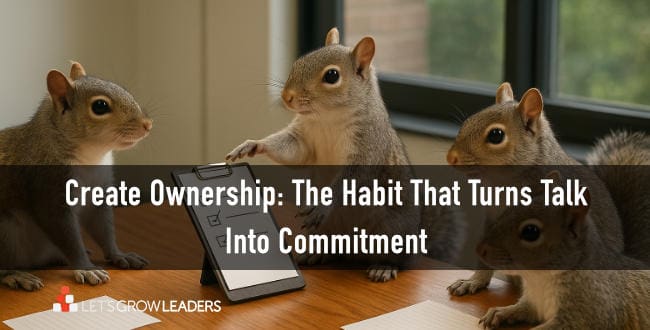Achieve More When you Lead Different and Diverse People
You know that the ability to lead different and diverse people to come together and blend their talents is key to achieving breakthrough results. But if you’re like most leaders we work with, we imagine you’re still a bit caught off guard and surprised from time to time about just how different (and frustrating) these differences can be.
Learning to understand our own differences and how they impact those we are seeking to lead has been a critical part of our leadership journey.
As a young introvert, it flabbergasted David when he first learned that many people talk to figure out what they think. In a leadership training class one time he asked the facilitator, “You mean extroverts say things they don’t mean?”
Early in her career, Karin, a high-energy extrovert had a leadership mentor explain that her enthusiasm for her own ideas sometimes made teammates reluctant to speak up and share their concerns. She had to learn to slow down and ask strategic questions to give people time to process and catch up with her thinking.
The struggle is real. In our work as business and life partners, it often amazes us at how differently we interpret the same situation—and we teach this stuff!
People are Different
You may know it intellectually, but do people’s differences play a core role in your leadership? Do you lead different and diverse people differently?
People have different motivations than you. They process information differently than you do. Some want to compete, some want to get along. Some want to talk, some want you to leave them alone to do their work.
They have more or less urgency than you…more or less attention to detail…more or less focus on people or tasks or process or outcomes…they have different backgrounds. Something you find easy, they may have struggled with all their life just to get by.
Some people need to explain, some people don’t want an explanation. Some people trust authority; some trust no one – especially authority. Some like public recognition; others prefer a quiet “thank you.”
And those are just a few of the many, many ways people are different.
Your success as a leader depends on your ability to lead different and diverse people – to bring all these differences together to achieve results.
The Leadership Challenge of Differences
Unfortunately, people’s differences trip up many leaders. Over the years, we’ve seen so many leaders (and we’ve done it too) become exasperated when a team member doesn’t do what they expect.
When you dig deeper, you find out that the leader expected the team member would act just like the leader would in the same situation.
This creates many conflicts and expectation violations. Here are a few examples:
- Mary gives the team the freedom she craves from her own manager, but it confuses her team full of people who prefer more daily attention, and they feel like Mary doesn’t care about them.
- Joe methodically adds the new project his manager gave him to the bottom of his to-do list. But he frustrates his manager who thought Joe would intuitively understand that this project trumps everything and needs to be done right away.
- Mike comes to a staff meeting prepared to take part, arrives early, sits in front, and his teammate, Jill, thinks he’s angry because he didn’t talk engage or talk with anyone while the meeting was getting ready to start.
- Laura, a database manager, works long hours to ensure the data is accurate and then quits when the Kathy, her team leader, ignores her data in favor of political relationships.
At their core, all these relationship breakdowns happened because the leader didn’t understand that people are different.
Effective leaders understand that people are different and lead to draw the best out of each person.
Five Ways to Lead Different and Diverse People
Here are a few solutions for the challenges presented by our diversity.
- Familiarize yourself with the basics of human diversity. There are many tools to help you do this. The specific tool is not as important as the fundamental understanding that people are different and that these differences can all add value.
- Value the differences. No one wants to be tolerated. Every person on your team needs to be valued for the meaningful contribution they make. Intentionally seek out different perspectives, backgrounds, experiences, and ways of thinking. Get all the feedback you need to make the best decisions.
- Give people what they need to be effective. This doesn’t mean that you enable poor performance. Rather, learn how your people are wired, what energizes them, and meet them where they are to draw greatness from them.
- Provide clarity. Mind the MIT (the Most Important Thing), clarify the decision, who owns the decision, and the specific behaviors that lead to success. Clarify the relationships and interactions different roles will play as everyone works together. Use the Expectations Matrix to align the team’s expectations of one another – and of you. The clearer you can be, the more you pull everyone’s diverse talents and strengths together to achieve results.
- Understand the ways people are the same. For example, everyone wants a leader they can trust. Everyone benefits when you link activity to meaning and purpose. Everyone wants appreciation (though they may receive it in different ways). Also, most people enjoy a sense of control and self-determination. (Though again, the amount varies.)
Your Turn
Remember, leadership is a relationship. The more you recognize, appreciate, and bring different strengths together, the more you’ll achieve. Leave us a comment and share your best example of a leader who brilliantly showed how to lead different and diverse people.
See Also: Speak Up Culture: How to Encourage More and Better Ideas








It makes sense that there are different leadership styles because there are so many different types of people in this world!
Very true, Al!
I always try to evaluate the learning style of the individual team member, I then piece that approach to their learning style together with the personality traits and try to craft a leadership approach the will be understood by the team member and be effective in accomplishing the main task necessary for the team to succeed.
Great description of human-centered leadership. Thank you Paul.
Leading a team is similar to raising your kids and learning that they each have different personalities, goals, expectations and ways of learning. This was a great article.
Thanks, Julie! Great analogy.
The best teachers, leaders, coaches, mentors I have encountered in life know how to tap into each individual’s innate talents and learn how to unearth what makes people tick. Leading a team is so much more than a top down approach or delegating tasks to your direct reports. Employees or athletes want to feel valued and feel that their efforts move the needle for their team or company. An authoritarian style no longer is effective. It alienates, can be seen as demeaning, and more than anything else shows those under your leadership that they are just a means to an end. We need to show our team members that we care for and understand them. We need to show them that we are battling along side them to achieve a common goal. This is the most effective way to gain buy-in, and create the most high performing teams.
So true Christian – thanks for adding!
No matter how diverse we are, we are all still part of a team. We must learn to work with each other and value each of the strengths and weaknesses that are brought to the table from each member. Diversity is good and brings a new scope.
Cyndi, Well said! Thanks for expanding the conversation!
The biggest challenge I have is finding out a way to communicate with all my team. We have a very wide variety of people and personalities on my team. Along with that we have a bit of language barrier with some also which increases the difficulty of communication. It is sometimes difficult to get a point across when someone does not fully understand what you are saying and how you are saying it. I have to be aware that some other cultures d not translate to our world as easy a others.
Thanks so much for sharing, Mark. So true. Communication can be challenging. One of our favorite techniques is to check for understanding– to ask them to summarize what they’ve heard you say. That’s one of our 6 concepts you can’t lead without… more on that here. https://letsgrowleaders.com/leadership-skills-6-core-competencies/. Also, we have a new book coming out on communication and dealing with difficult people and situations. It comes out in May, but is available for pre-order now. Here’s a bit about that. https://letsgrowleaders.com/conflict-phrases-book/
Sometimes personality or instincts tests like the Kolbe test are helpful in learning different characteristics of team members and how they can best work together. I have a great example of how this worked with my daughter at a strategic coach session.
Thanks, Tom! Agreed.